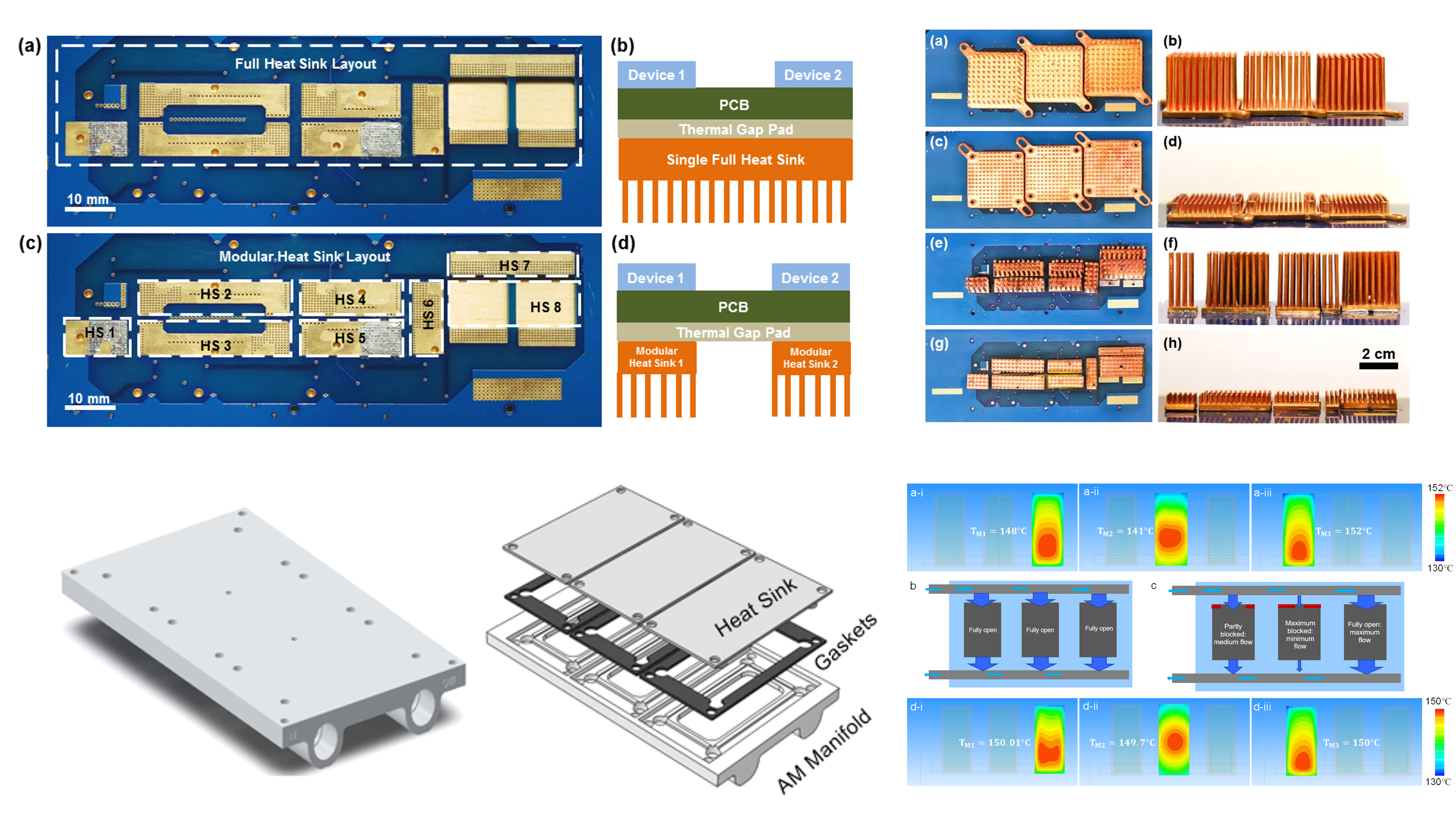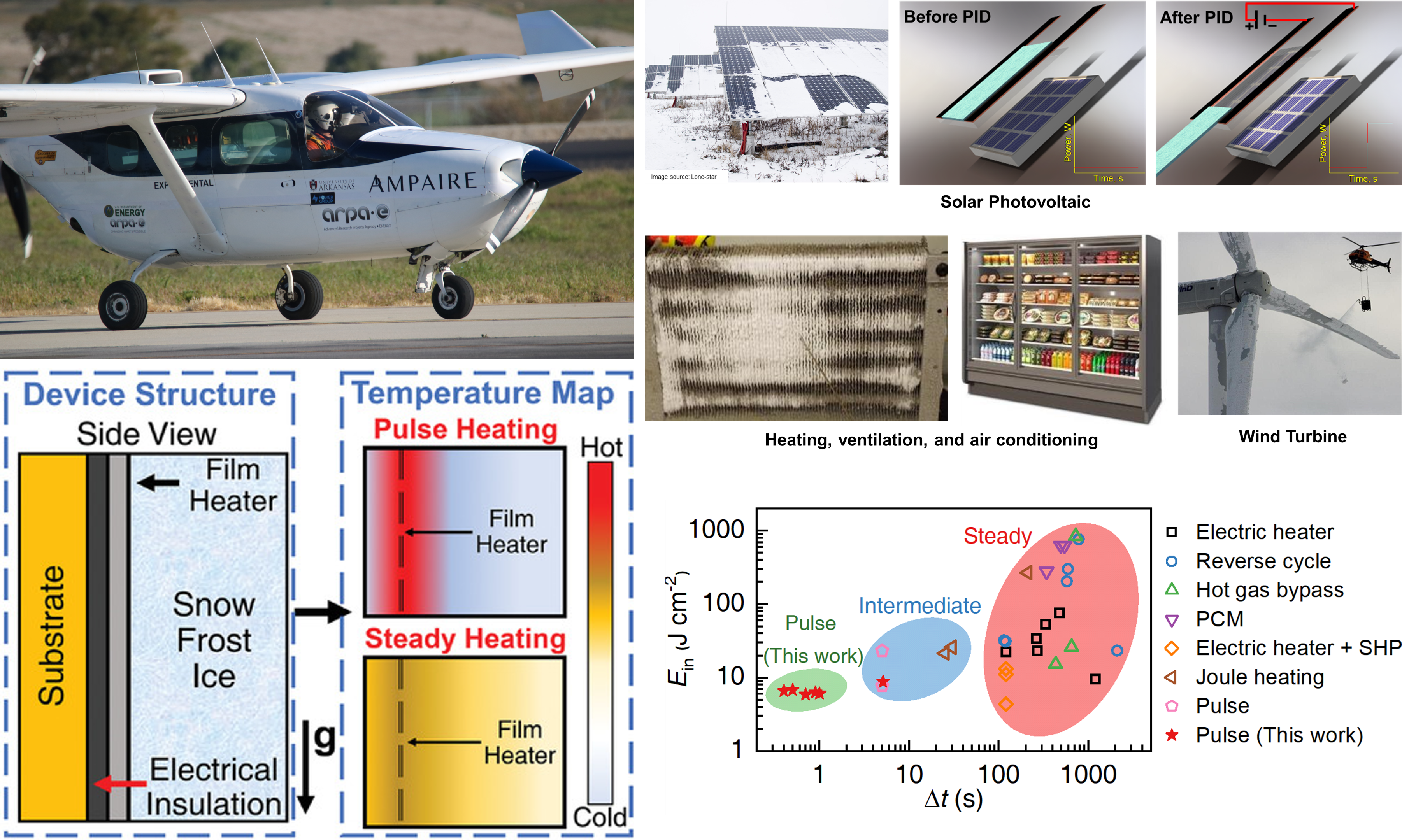Recent advancements in micro/nanofabrication have introduced new techniques for creating and characterizing materials, enabling the study of transport phenomena across various engineering disciplines. Nanotechnology has shown significant potential, particularly in the development of micro/nanostructured surfaces for phase change heat transfer applications, such as boiling, evaporation, condensation, and freezing. These innovations are critical for high-heat-flux electronics cooling, desalination, and industrial power generation. Researchers have successfully controlled droplet nucleation on hybrid or biphilic surfaces, which combine hydrophobic and hydrophilic properties, enhancing fog harvesting, heat transfer, and icing prevention. However, current fabrication techniques face challenges, including scalability, high costs, and a lack of optimized design guidelines. My work focuses on developing scalable, efficient fabrication methods and improving numerical models to better predict the performance of these surfaces in phase change applications, ultimately contributing to improved energy efficiency in thermal systems.
Muhammad Jahidul (Jahid) Hoque
Postdoctoral Research Associate - UIUC
Engineered Surfaces and Interfacial Phenomena

Functional Surfaces and Devices for Clean Energy

Surface functionalization through coatings has diverse applications, including phase change heat transfer in HVAC systems, anti-fouling in various transportation sectors and buildings, and electronics cooling. However, a significant challenge in the industrial adoption of these functional surfaces is their long-term durability. For instance, in the power plant industry, applying chemical coatings to make condenser units hydrophobic can enhance efficiency by up to 2%, reduce greenhouse gas emissions, and lower the levelized cost of electricity (LCOE) by 1.9%. Despite these potential benefits, the long-term durability of hydrophobic coatings is not yet proven, which limits their industrial use. Additionally, while traditional functional surfaces perform well with low surface tension liquids and refrigerants, there is a pressing need to develop more durable surfaces for these applications to improve energy efficiency. This need extends to low-temperature applications, such as surface icing and frosting. My research focuses on understanding the degradation mechanisms of surfaces in these conditions—steam condensation, low surface tension liquids, refrigerants, and icing/frosting environments. With this knowledge, I am working on developing durable surfaces for various energy applications, including power generation, HVAC systems, transportation (marine, aviation, etc.), and electronics cooling.
Thermal Management of Electronics

Poor thermal management of electronics not only reduces device performance but also significantly shortens their lifespan, with 55% of power electronics failures attributed to elevated temperatures. As power densities increase, with localized heat fluxes reaching up to 1 kW/cm², the need for effective thermal control has become critical. Current thermal management schemes often use thermal interface materials (TIMs) to provide mechanical compliance and electrical isolation. However, TIMs typically suffer from poor thermal conductivity, which can hinder heat transfer efficiency. Additionally, achieving proper electro-thermal co-design for improved performance is not always guaranteed, which can lead to reduced system-level reliability or even failure in high-power density applications, such as heavy-duty vehicles and aviation industries (e.g., electric aircraft). My work focuses on developing advanced thermal management solutions through precise modeling and optimization, with a strong emphasis on electro-thermal co-design. I aim to create lightweight, durable thermal solutions that enhance volumetric and gravimetric power density and improve overall system-level reliability.
Thermal management is a major bottleneck in increasing the computational performance of modern data centers, impacting both density and efficiency. Data centers currently consume 2% of U.S. electrical energy, with projections suggesting this could rise to approximately 10% by 2030. Cooling systems account for about 45% of this energy consumption, significantly contributing to carbon emissions. Liquid immersion cooling is crucial for efficient heat removal in data centers and other thermal systems. Traditional cooling solutions often suffer from inadequate surface design and the impact of conventional coolants on system performance and environmental sustainability. Therefore, developing eco-friendly cooling architectures—featuring sustainable coolants and advanced surface engineering—is essential. My research focuses on creating innovative cooling solutions by integrating advanced metrology, multi-dimensional surface architectures, and assessing diverse working conditions and durability.
Energy Conversion Systems

Renewable energy technologies have garnered significant attention as alternative methods for electricity generation, offering a promising solution to reduce emissions. However, the rapid rise in anthropogenic greenhouse gas emissions is accelerating global climate change, leading to an increased frequency of extreme weather events, including unexpected snow, frost, and ice accumulation in regions not typically accustomed to such conditions. This accumulation of ice, snow, and frost presents a critical challenge for electrified systems, both stationery and mobile. Renewable energy systems, such as photovoltaic (PV) panels and wind turbines, are becoming increasingly viable for meeting global energy demands. However, snow coverage on PV panels can block incoming solar light, reducing power generation, while wind turbines in cold climates suffer from icing issues throughout their operational lifespan. Similarly, the aviation industry is shifting towards electrification, with electrified aircraft offering reductions in emissions and noise. Yet, these aircraft are particularly vulnerable to icing, which diminishes energy efficiency and compromises aerodynamic lift. Unlike their internal combustion engine (ICE) counterparts, electrified aircraft lack onboard mitigation strategies, such as hot combustion gases or abundant electrical power for de-icing systems. To address these challenges, my work focuses on developing rapid, energy-efficient de-icing and defrosting strategies applicable to renewable energy systems, electrified aircraft, and the HVAC industry. Additionally, by leveraging fundamental research in surface design and phase change phenomena, I am working on creating waste heat recovery systems, thermal storage devices, and long-distance thermal transport solutions to ensure sustainability and alleviate the ongoing energy crisis.
Advanced Analytics for Energy
To achieve higher energy efficiency, energy systems must undergo transformative changes. This transformation requires the development of novel system architectures that focus on multi-level modeling and optimization while minimizing capital and operational costs. For example, integrating hydrophobic coatings and surface structures on state-of-the-art metallic condensers can significantly enhance power plant efficiency and reduce CO2 emissions. However, traditional materials often contain environmentally harmful perfluorinated compounds and lack durability. At present, no inorganic hydrophobic coating exists, but discovering one could be a game-changer due to its potential durability and chemical stability in harsh environments. By shifting our focus from conventional materials to leveraging data-driven machine learning (ML) for materials discovery, I hypothesize that we can unlock a fundamental understanding of novel alloy families through material property prediction. Moreover, there is limited data on the practical impact of hydrophobic coatings in large-scale industrial power plants, beyond a few statistical indicators. I focus on dynamic system modeling (DSM) to evaluate the overall impact of implementing this technology on an industrial-scale condenser unit. The goal is to create and validate a robust, real-time dynamic model for a condenser unit used in a Combined Cycle Power Plant (CCPP) and to assess the benefits of adopting hydrophobic technology. This data-driven approach can also be extended to other energy systems, allowing us to develop performance prediction models that prioritize energy efficiency, techno-economic and environmental impact analysis. These insights hold immense potential for system optimization and can make a significant contribution to industrial decarbonization, ultimately ensuring sustainable energy production.